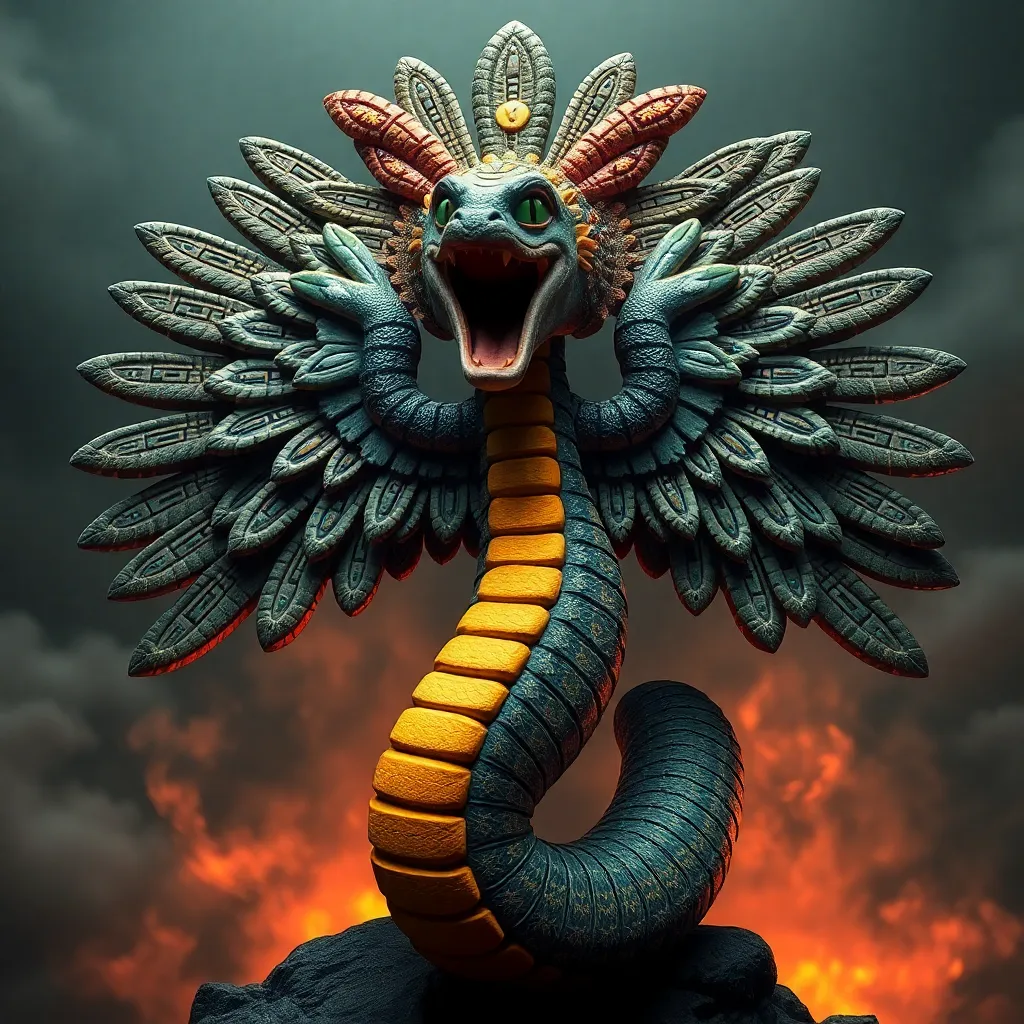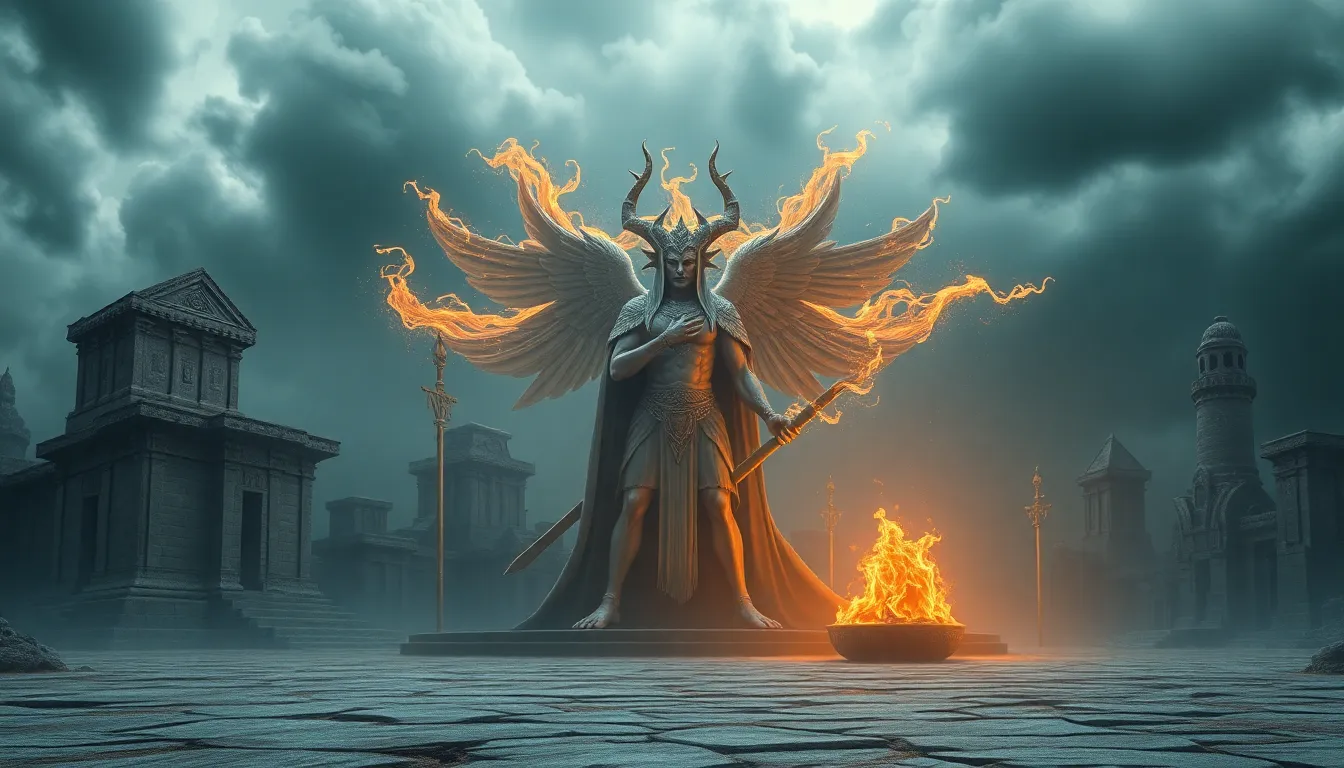Quetzalcoatl and the Significance of the Number Four: The Feathered Serpent’s Connection to Cardinal Directions
I. Introduction
Quetzalcoatl, known as the Feathered Serpent, is one of the most revered deities in Mesoamerican mythology. His significance transcends mere worship, embodying a rich tapestry of cultural beliefs and practices among the Aztec and other indigenous peoples of the region. Central to Quetzalcoatl’s mythology is the number four, a figure that holds profound importance in various cultures around the world.
This article aims to explore Quetzalcoatl’s connection to the number four, particularly its relationship with the cardinal directions, and how these elements shaped Mesoamerican cosmology and daily life.
II. The Mythology of Quetzalcoatl
Quetzalcoatl’s origins can be traced back to the Toltecs, and he is often depicted as a serpent adorned with feathers, symbolizing the interplay between earth (serpent) and sky (feathers). He is associated with wisdom, wind, and the morning star, representing enlightenment and the dawn of new beginnings.
In creation myths, Quetzalcoatl plays a pivotal role in shaping humanity. He is often depicted as the deity who brought maize, the staple food of Mesoamerican societies, and taught the people important skills such as agriculture and writing. In the Aztec pantheon, Quetzalcoatl stands as a counterbalance to other gods, emphasizing peace, learning, and civilization.
The Feathered Serpent symbolizes duality—the merging of earth and sky, life and death, and the cyclical nature of existence.
III. The Significance of the Number Four in Mesoamerican Culture
The number four holds a sacred place in the belief systems of many indigenous peoples in Mesoamerica. This significance can be observed in various aspects:
- Cardinal Directions: The four cardinal directions (North, South, East, West) are central to navigation, rituals, and cosmology.
- Cosmic Structure: Many creation myths are organized around the four corners of the universe, with the number four representing stability and balance.
- Rituals: Numerous ceremonies and rituals incorporate the number four, often involving four sacred elements or offerings.
IV. Cardinal Directions and Their Symbolism
The cardinal directions play a crucial role in Mesoamerican culture, each direction imbued with its own symbolism and significance:
- North: Often associated with the cold, death, and the underworld.
- South: Represents warmth, life, and fertility.
- East: Symbolizes birth, renewal, and the beginning of the day.
- West: Linked to endings, transformation, and the setting sun.
Spiritually, these directions guide rituals and influence the daily lives of the people, providing a framework for understanding the world around them.
V. Quetzalcoatl and the Cardinal Directions
Quetzalcoatl’s associations with cardinal directions further illustrate his importance in Mesoamerican mythology:
- North: Quetzalcoatl is seen as a guardian against the harshness of the northern winds.
- South: He represents the life-giving properties of the southern warmth and bountiful nature.
- East: As the morning star, Quetzalcoatl is directly linked to the dawn, symbolizing new beginnings and enlightenment.
- West: He embodies transformation and the journey into the afterlife, guiding souls to their next existence.
Through various myths, such as those detailing the creation of humans from the bones of the dead and his quest for the sacred maize, Quetzalcoatl’s connection to these directions illustrates his role in maintaining cosmic balance.
VI. The Influence of Quetzalcoatl on Mesoamerican Society
Quetzalcoatl’s influence permeated many aspects of Mesoamerican society:
- Art and Architecture: Temples and sculptures often depicted Quetzalcoatl, showcasing his significance in urban planning and artistic expression.
- Religious Practices: Festivals and rituals dedicated to Quetzalcoatl were vital to community life, reinforcing cultural identity.
- Modern Legacy: Quetzalcoatl’s essence continues to resonate in contemporary spirituality, art, and cultural narratives, influencing modern interpretations of indigenous heritage.
VII. Comparative Analysis with Other Cultures
When considering Quetzalcoatl alongside deities from other cultures, intriguing parallels emerge:
- Similar Deities: Many cultures have deities associated with cardinal directions, such as the Greek god Hermes, who also symbolizes guidance and transitions.
- Cross-Cultural Significance: The number four appears in various belief systems, representing completeness and stability, such as the four elements in Western philosophy.
- Interconnectedness: These similarities highlight universal themes in mythology, emphasizing the shared human experience across cultures.
VIII. Conclusion
In conclusion, Quetzalcoatl’s significance as the Feathered Serpent is deeply intertwined with the number four and the cardinal directions. His mythology reflects a complex understanding of the cosmos, emphasizing balance, duality, and the cyclical nature of life.
As we reflect on these symbols in contemporary society, they remind us of the importance of interconnectedness and the wisdom embedded in ancient belief systems. Further exploration of Mesoamerican mythology reveals rich insights into the narratives that shaped civilizations and continue to inspire modern thought.



